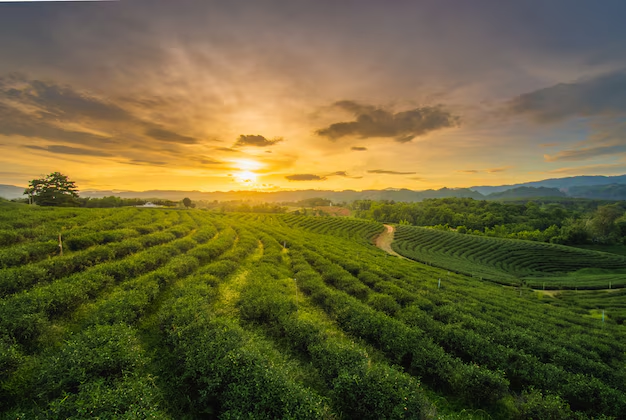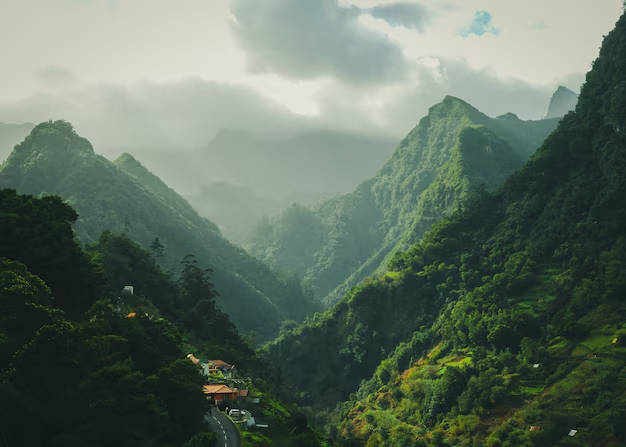Nature, in its purest form, holds a unique charm that captivates the hearts of adventurers, photographers, and lovers of tranquility alike. The untamed beauty of nature offers a vast canvas, where the rugged mountains, dense forests, and roaring rivers paint an image that words often struggle to describe. A journey through the wilderness is more than just a trip—it is an immersive experience that connects the spirit of humanity with the raw forces of the Earth.
From the remote reaches of the Amazon rainforest to the towering peaks of the Himalayas, the wilderness is an unfiltered reflection of the natural world’s diversity and resilience. As we step into these unspoiled regions, we are reminded of the world as it once was—before cities, industries, and technology took hold. The wilderness holds a profound ability to make us feel small, yet deeply connected to something larger than ourselves.
The Call of the Wild: A Journey into the Heart of Nature
The wilderness offers an escape from the noise and chaos of modern life. In the wild, you leave behind the clutter of social media notifications, the rush of deadlines, and the constant demands of the digital world. It is an opportunity to reconnect with the earth’s rhythms and rediscover the simplicity of life.
Venturing into the wilderness takes you to places where human intervention is minimal. The stillness of a dense forest, the thunderous rush of waterfalls, the vastness of an open desert—all of these are examples of nature’s raw beauty. These environments thrive with unique flora and fauna, many of which are adapted to survive in some of the harshest conditions on the planet.
Whether it’s a trek through the towering trees of the Pacific Northwest or a climb up the icy slopes of the Alps, every journey into the wild brings new encounters with life in its purest form. The wilderness also demands respect. It’s a reminder that nature is untamable and that we, as visitors, must tread carefully, respecting both the land and its inhabitants.
The Healing Power of Nature
The wilderness is not only visually stunning; it also offers emotional and psychological benefits. Spending time in nature has been scientifically shown to reduce stress, improve mood, and boost overall well-being. A hike through the woods, a swim in a natural lake, or simply gazing at the stars in the open sky can provide an unmatched sense of peace.
The concept of “biophilia” explains our innate connection to nature. Humans are instinctively drawn to natural landscapes, which can help alleviate feelings of anxiety and mental fatigue. The simplicity of nature’s beauty allows the mind to unwind and refocus, offering clarity in ways that modern distractions cannot replicate.
Challenges in the Wilderness
While nature offers an abundance of beauty and serenity, it also presents challenges. The wilderness is not always forgiving. Unpredictable weather, rough terrain, and wild animals can turn an adventure into a test of resilience and survival. However, it is often through these challenges that we gain a deeper appreciation for nature’s force and power.
Survival in the wild requires knowledge and preparation. Understanding how to navigate, what to bring, and how to safely interact with nature’s elements are crucial for any adventurer. Learning from experienced guides and respecting the landscape allows for a safe and fulfilling wilderness journey.
Why We Should Protect Nature
As beautiful and captivating as nature is, it faces numerous threats from human activities. Deforestation, pollution, and climate change all have devastating effects on the delicate balance of our ecosystems. The wilderness areas that remain unspoiled are precious, and they must be preserved for future generations.
Conservation efforts are more important than ever. Sustainable practices, responsible tourism, and habitat restoration are vital to ensuring that the wilderness can continue to thrive. Protecting these environments not only preserves biodiversity but also ensures that we maintain access to the profound benefits of nature for generations to come.
Frequently Asked Questions (FAQs)
- What is the best way to prepare for a wilderness adventure? Preparation for a wilderness trip involves research, proper gear, and physical conditioning. Study the terrain, pack appropriately for the weather, and ensure you have the knowledge to handle emergencies.
- Is it safe to travel to remote wilderness areas? Wilderness areas can be safe with proper precautions. It’s essential to plan ahead, travel with a guide if necessary, and always inform someone of your itinerary and expected return.
- What are the benefits of spending time in the wilderness? Time in nature can reduce stress, improve mental clarity, enhance creativity, and increase physical health. Being in nature has proven psychological benefits such as boosting mood and lowering anxiety.
- How can we protect natural wilderness areas? We can protect wilderness by supporting conservation organizations, reducing our carbon footprint, following sustainable practices, and advocating for policy changes that protect wildlife and ecosystems.
- What should I do if I encounter wild animals in the wilderness? Maintain a safe distance, do not approach them, and avoid startling them. Follow safety guidelines for the specific region, as interactions with wildlife can vary depending on the species.
- How do I deal with extreme weather in the wilderness? Extreme weather requires adequate preparation. Always check weather forecasts, pack layers, and carry emergency supplies such as a first-aid kit, food, and water. If necessary, know how to find shelter or navigate through storms safely.
- Can I explore the wilderness alone? Solo wilderness exploration is possible, but it’s safer to travel with a companion or guide, especially in unfamiliar or remote areas. Always leave a detailed plan with someone who knows your route and expected return.
Conclusion
The untamed beauty of nature offers a profound experience that connects us with something primal and raw. From the towering peaks to the deep forests, the wilderness is a reminder of the earth’s resilience and majesty. It is a place where the human spirit can reconnect with the world in its most natural state.
However, as we immerse ourselves in the splendor of these landscapes, we must also recognize the importance of preservation. Our actions today will determine the future of these wild places. By respecting the wilderness, protecting its resources, and supporting conservation efforts, we ensure that the beauty of nature will endure for generations to come.
Key Takeaways
- The wilderness offers unmatched beauty and peace, allowing people to reconnect with nature and escape the distractions of modern life.
- Spending time in nature has mental and physical health benefits, such as reduced stress and improved well-being.
- Wilderness adventures can be challenging but also offer valuable lessons in resilience and survival.
- Protecting the wilderness is crucial for both the environment and future generations, requiring sustainable practices and conservation efforts.
- Preparation, respect, and safety are essential when exploring remote natural landscapes.




